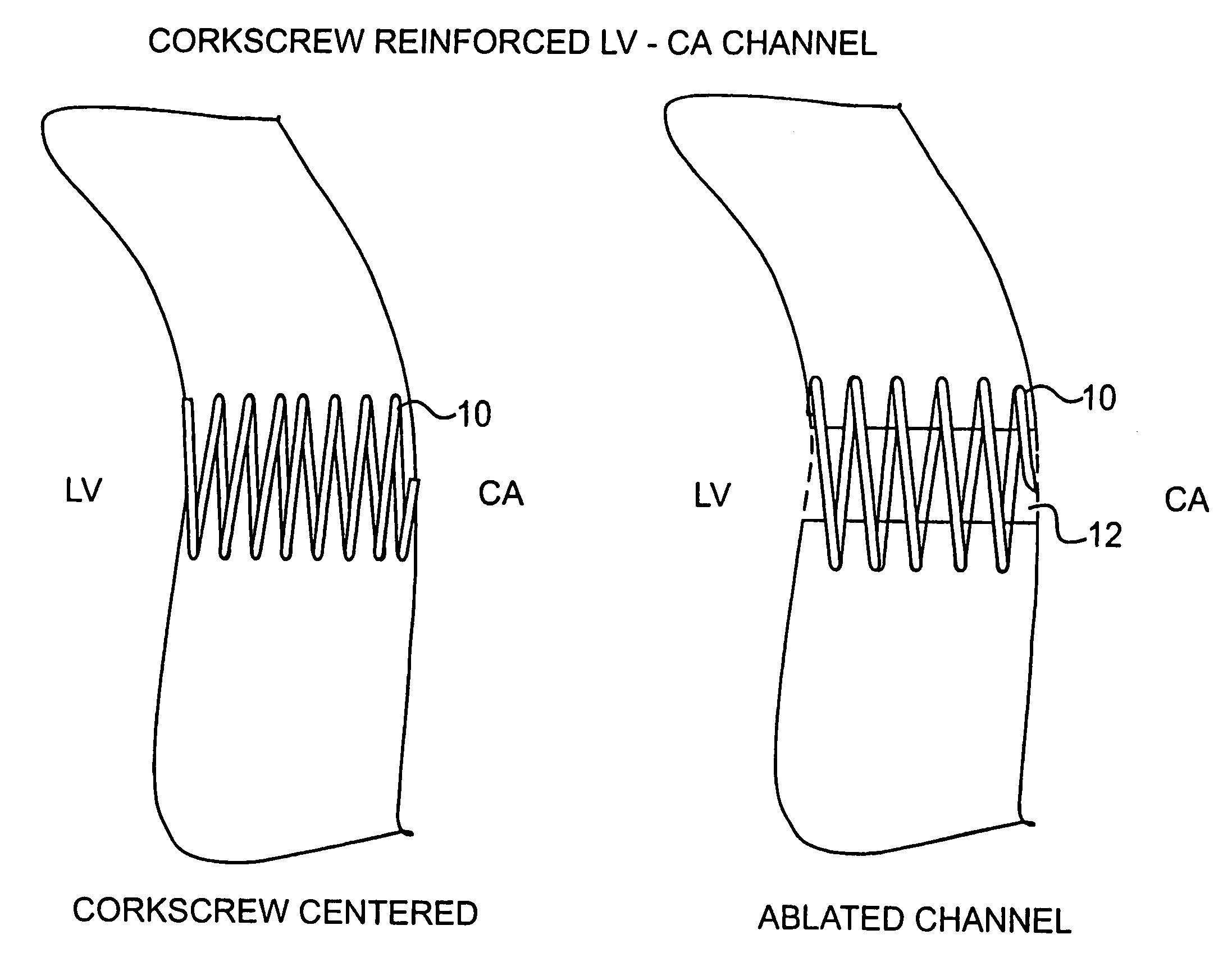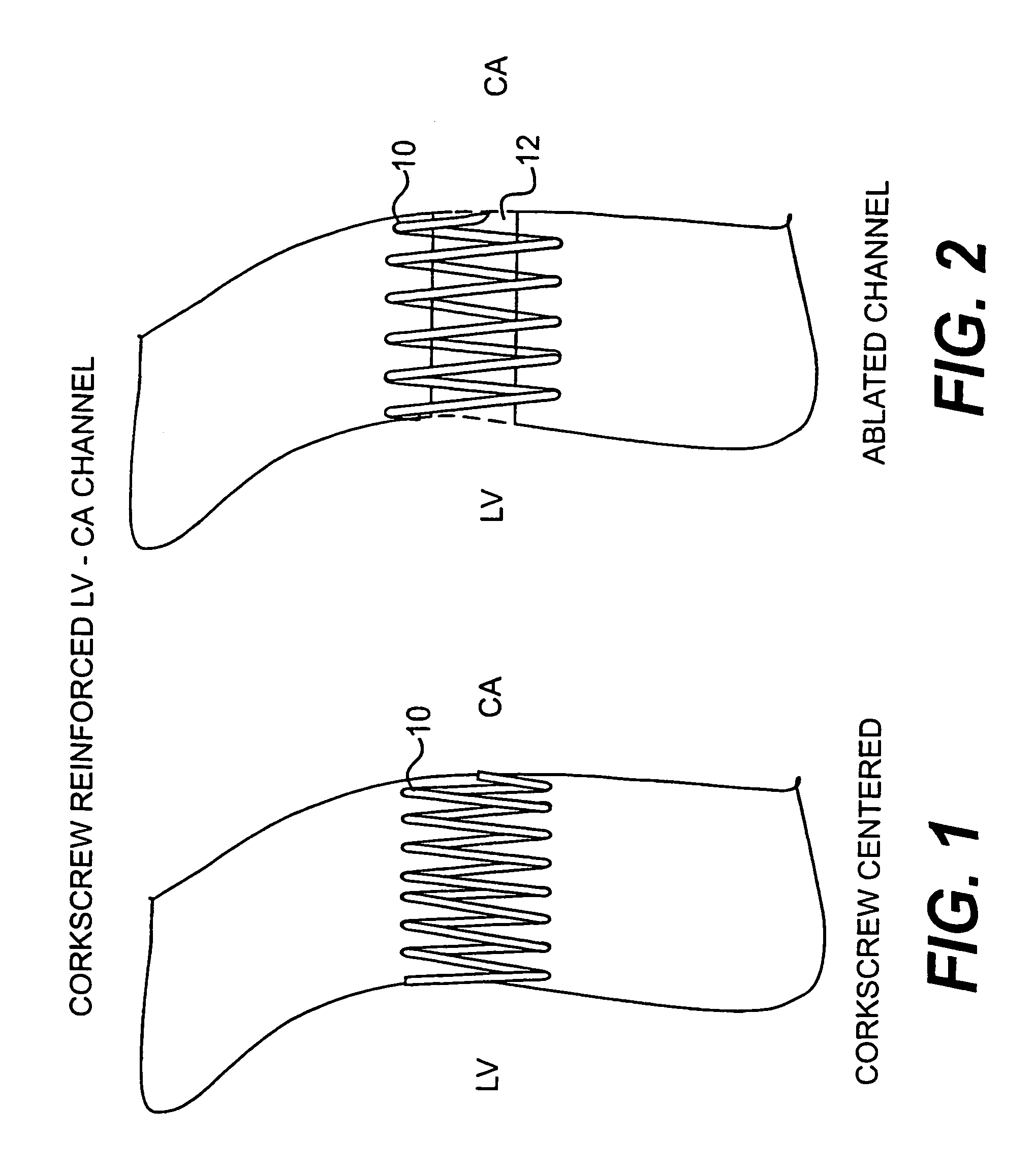Corkscrew reinforced left ventricle to coronary artery channel
a technology of left ventricle and corkscrew, which is applied in the field of corkscrew reinforced left ventricle to coronary artery channel, can solve the problems of cyclic fatigue fracture, dislocation of the tube, and chronic inflammation response, and achieves high stability, good tolerance, and long and continuous movement.
- Summary
- Abstract
- Description
- Claims
- Application Information
AI Technical Summary
Benefits of technology
Problems solved by technology
Method used
Image
Examples
Embodiment Construction
[0009]FIGS. 1 and 2 roughly show the preferred design, which would comprise first screwing in a coil 10 into the heart wall HW between the left ventricle LV and coronary artery CA (FIG. 1), and then followed by forming of a channel 12 by, for example, laser, plasma, electrical, or mechanical device (FIG. 2). At this time it would be preferred to use the plasma ablation technique as the diameter of the channel can be controlled with considerable accuracy at the dimensions one would want, and also the asymmetry can be controlled.
[0010]In one embodiment, the corkscrew or coil 10 may be configured to have a desired pitch and spacing so that insertion of the coil 10 into the heart wall does not puncture through the coronary artery CA. This is accomplished by choosing an entry point for the coil 10 adjacent the coronary artery, and screwing the coil 10 into the heart wall such that the coronary artery is positioned in between the turns of the coil as the coil is inserted. In this embodime...
PUM
 Login to View More
Login to View More Abstract
Description
Claims
Application Information
 Login to View More
Login to View More - R&D
- Intellectual Property
- Life Sciences
- Materials
- Tech Scout
- Unparalleled Data Quality
- Higher Quality Content
- 60% Fewer Hallucinations
Browse by: Latest US Patents, China's latest patents, Technical Efficacy Thesaurus, Application Domain, Technology Topic, Popular Technical Reports.
© 2025 PatSnap. All rights reserved.Legal|Privacy policy|Modern Slavery Act Transparency Statement|Sitemap|About US| Contact US: help@patsnap.com


